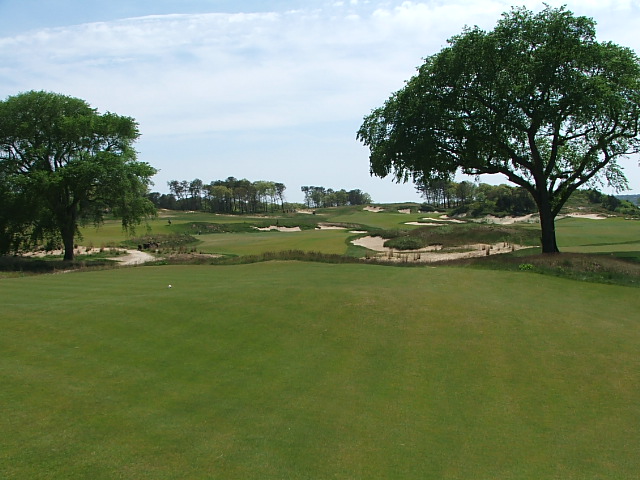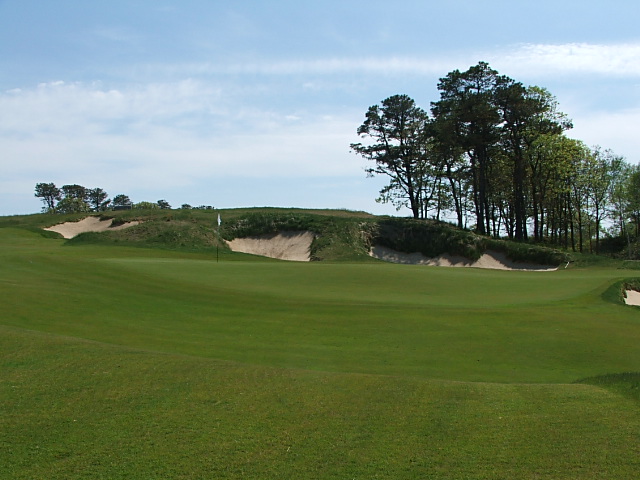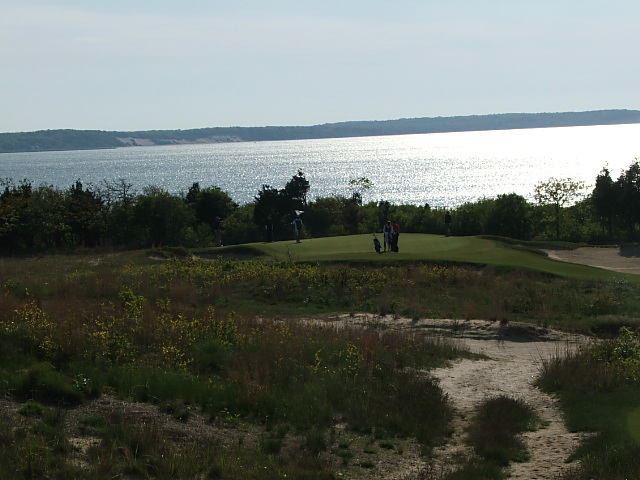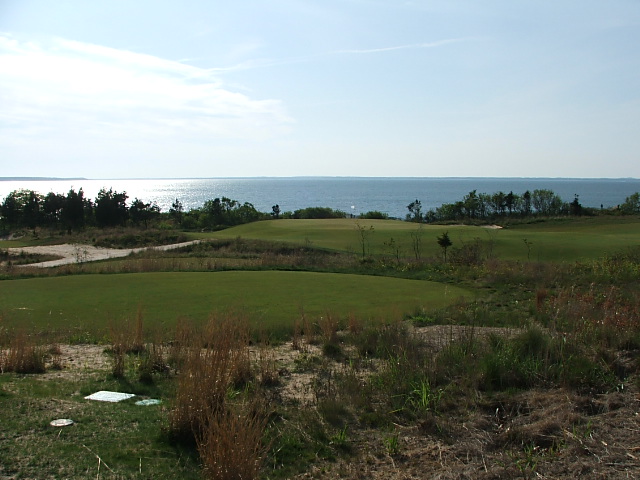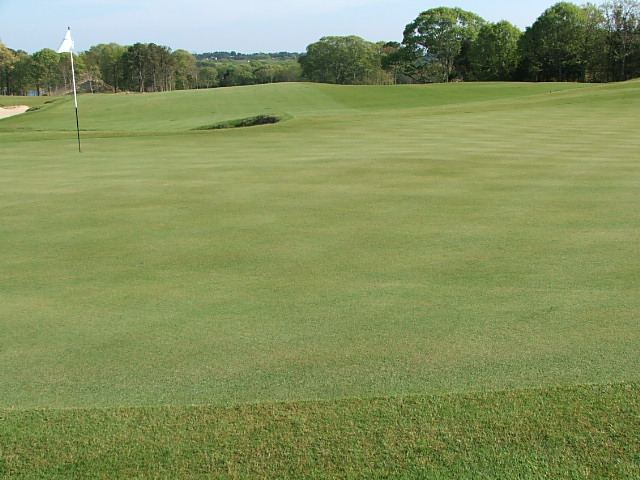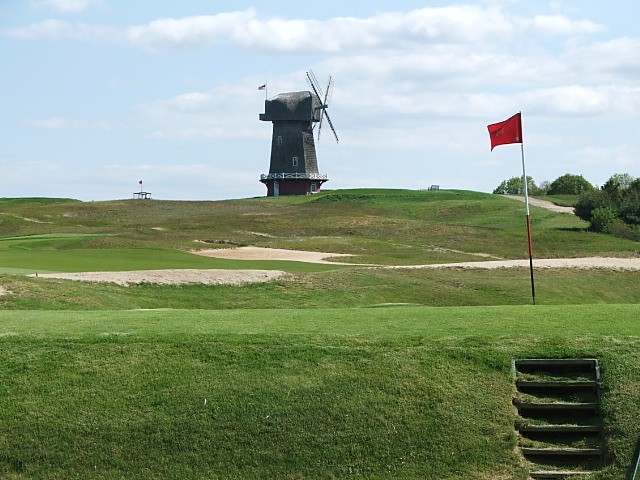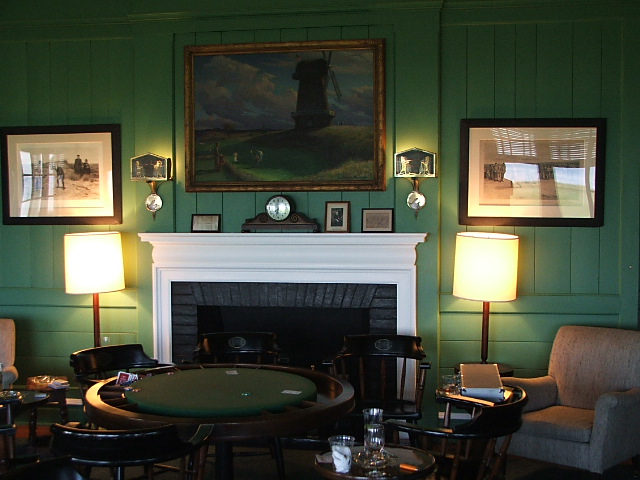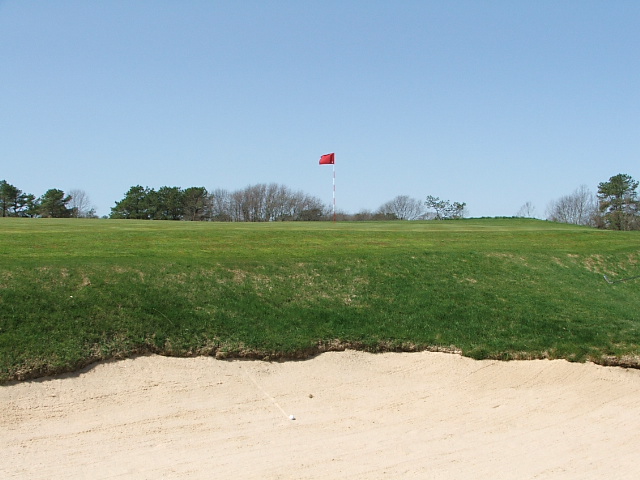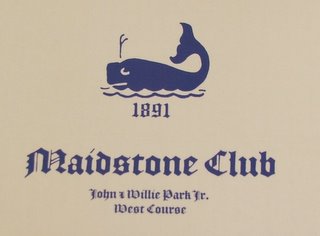
Thus far on my quest, I have found Pete Dye designed golf courses have been a mixed bag. I don't like The TPC at Sawgrass, although I like Whistling Straits and The Ocean Course at Kiawah. Casa de Campo has nine really good holes and nine average holes.
This summer I traveled down to the South Carolina Low country for some R & R and golf. I scheduled an early morning tee time at Harbour Town Golf Links (ranked #67 in the world).
In general, I have found it a good rule to be suspicious any time words are spelled out in old English like, "Harbour" or "Olde". Normally this is a red-flag that screams 'tourist rip-off'. Generally, it means a place is set up well for the silver-haired set and can be a great place to go if you are looking to over-pay for cute little Christmas tree ornaments and lots of other useless drivel.
Did I go to Harbour Town with pre-conceived notions? Yep, but it's hard not to, having seen the course on TV so many times, and I have several friends that have played it and complained that it was so tightly packed with condos that it was difficult to appreciate the course. In addition, Harbour Town is like a golf factory with group after group going off at regular intervals and pushed along the course. Plus, you have to ride in a cart here, which I'm not a big fan of.
Low country live oak with Spanish moss
Harbour Town is located in the Sea Pines resort on Hilton Head Island, South Carolina, which, for such a small state, is golf rich. South Carolina features three of the top ranked courses in the world: Harbour Town, Yeamans Hall in Charleston and The Ocean Course on Kiawah Island. Hilton Head is one of the most successful real estate development ventures in U.S. history. There are over 20 courses in Hilton Head and the density of the housing is in fact alarming and omnipresent throughout the golf course.
Harbour Town has many public roads running through it. The most common sighting on the golf course when I played were scores of families riding bikes around and amongst the condominiums. I found that Harbour Town had a certain kitschy quality and sense of real Americana to it, that, in the end, I found hard to dislike. Like watching a Jerry Lewis movie, it is so bad, it's good. No matter how much you try, you can't stop watching and you end up enjoying it. Such was my experience at Harbour Town. I came to appreciate the uniqueness and subtlety of the golf course despite the intensive housing development.
The Golf Course
To summarize Harbour Town: narrow fairways and small greens. The design, layout and routing are imaginative and good, even though the course is completely flat. You can't just get up and hit driver on every hole. It is designed to really make you think about the type and shape of the shot before hitting each one. The narrowness of the fairways and the over-hanging trees force you to have to hit a certain side of the fairway in order to have a decent shot at the small greens. In this regard, Harbour Town reminded me of Merion.
The picture below shows both the narrowness of the fairway and the omni-present housing lurking behind the trees.
2nd hole narrow fairway and houses
Although the fairways in reality are not that narrow, they give the appearance of being so. This is because so many of the holes have overhanging trees that encroach over the fairways, making it a visually difficult golf course to drive the ball. Harbour Town represents the type of short, shot-makers course that seems to be out of vogue. It's nice to have world-class courses like this that are not all about length and brute force.
The other thing I appreciate about Harbour Town as a student of golf history is that this is one of Pete Dye's earliest designs and one of the first he used railroad ties on. As essentially the first course of its genre built in the modern era, this makes it a historically important course. Jack Nicklaus was a co-designer, and it was the first course he was involved with from a design standpoint. Also, I like the Low country setting with all the live oak trees with their hanging Spanish moss. The course also has a very interesting combination of palmetto trees, pine trees, elm trees, pampas grasses and other native plants.
Railroad ties on par three 4th
My two favorite holes on the course were the 13th and the 16th, which showcase Dye's bunkering abilities. The 13th has a narrow landing area off the tee (seen below). It is critical to hit your drive to the right-hand side of the fairway to have a reasonable shot at this unique green. The green itself is 'Y' shaped, with an imposing railroad-tied bunker half-way around it.
13th hole from the tee
13th green
13th green
The 16th hole is a sharp dogleg-left and has a long bunker down the entire left side and is a good risk/reward hole. The bunker is a magnet for balls. Even those of us in my group that avoided the bunker off the tee, ended up in it eventually.
The mental image I had of Harbour Town, based on the pictures I have seen of it, is that it plays along the water, which it doesn't. It is an inland course. The iconic picture of the lighthouse is a bit misleading. You expect the course to be mostly along the water. In fact, you don't see the water until you reach the 16th green. I found the 18th to be an interesting hole but not really as good as all the hype surrounding it. It has O.B. all the way down the right side and the Calibogue Sound on the left the entire way. Comparisons to the 18th at Pebble Beach are not in order.
I played a good paced round at Harbour Town, with a cart and a fore-caddy to move us along. We played in 4 1/4 hours and as much as I don't like riding in a golf cart, in scorching heat and high humidity, it makes sense that they use them. Overall, I enjoyed Harbour Town.
The Carolina Low Country
As I've said, I am a fan of the Carolina Low country. It is hot, humid and sultry and has a lot of charm. I enjoy having grits with breakfast and the other distinctive regional cuisine: She crab soup, crawfish, cornbread and the local seafood. I like the distinctive Southern drawl they speak with and the slow pace of life here is a nice change. Plus, how can you not like a place that sells "worms and shrimps" in gas stations and convenience stores.
After I finished playing Harbour Town I drove up to Charleston to play Yeamans Hall. Those of you that have been to Hilton Head will appreciate that I made the classic driving mistake on my way out. I turned into the wrong housing development, which actually isn't hard to do, because many look alike and with the low hanging trees it is always somewhat dark. I got lost and drove in circles for 30 minutes around the various neighborhoods that you need a satellite navigation system to get out of.
As you will see in my coming post on Yeamans Hall, the two places are on opposite ends of the spectrum. Harbour Town was the easiest course for me to play thus far. I went on-line prior to my trip and had the round completely booked within five minutes. The very private Yeamans Hall has almost no houses around it, gets little play, is the picture of proper Southern gentility and was very difficult for me to get on to play. Rather than just driving up to the bag drop like you do at Harbour Town, at Yeamans you have to get through the guarded entrance, seen below.
The entrance gate to Yeamans Hall
On my drive up to Charleston I took the back roads to soak up the atmosphere. It is an eclectic mix of tidal salt marshes, rivers, swamps, plantations, antique shops and fireworks stores. There is good reason they call this the Low country. Hopefully, the pictures below can give you a good feel for what it is like. It has a Fellini-like mix of high and low.
Plantation entrance with a beautiful allée of trees
 Low country antiquing
Low country antiquing
Low country entertainment
Oh yea, I almost forgot, I have to put in the obligatory picture of the signature lighthouse hole.
P.S. I did manage to get excellent prices on a couple of new Christmas ornaments while at Hilton Head and spent well less than the $270 that the greens fees cost me.






















